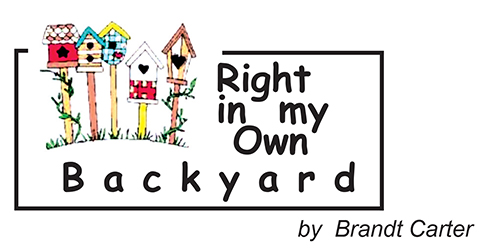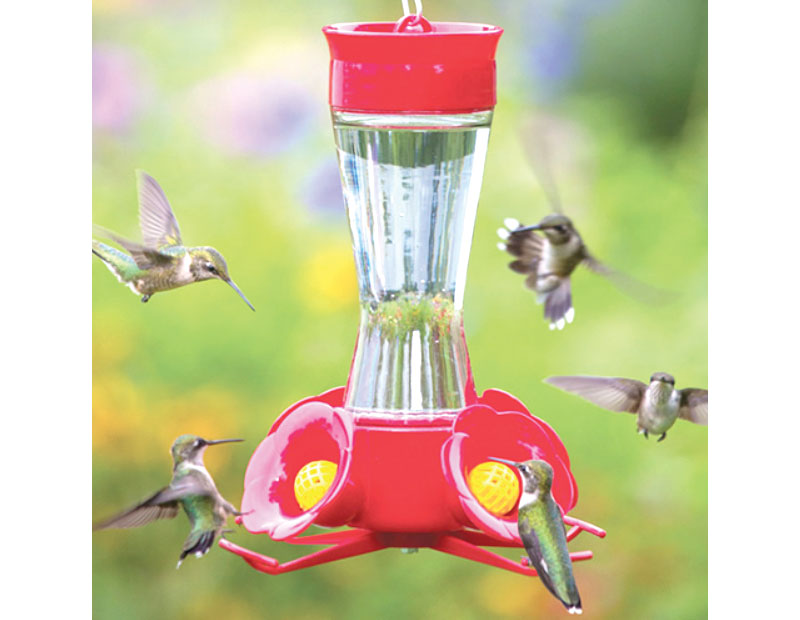
|
Broad Ripple Random Ripplings

The news from Broad Ripple
Brought to you by The Broad Ripple Gazette
(Delivering the news since 2004, every two weeks)

|
| Brought to you by: |

|

|

|

|

|

|
Converted from paper version of the Broad Ripple Gazette (v14n12)
Right in my Own Backyard - I Spy - by Brandt Carter
posted: Jun. 09, 2017

I Spy
I spy little glass feeders with red and yellow flowers hanging from eaves and poles around Broad Ripple. I must say probably twenty years ago I would see few of these contraptions. Now many residents have found that feeding hummingbirds is a pleasing summer pastime.
The hummers are amazing birds that command our respect. These teeny birds, often mistaken for insects, are amazing. Only the ruby-throated hummingbird will visit feeders and gardens in our area. You may see many more varieties west of the Mississippi River, but not here. You may also notice that there are more hummingbirds around lakes and rivers and in the countryside. But, don't let that stop you from putting out a hummingbird feeder. They are here in Broad Ripple.

image courtesy of Brandt Carter
Some fun facts that might inspire you to attract hummingbirds to your yard:
- Ruby throated hummingbirds winter in Central America and migrate from 525-1000 miles across the Gulf of Mexico taking up to 20 hours. You can follow their migrations online at www.hummingbirdcentral.com/hummingbird-migration, or www.learner.org. People just like you post their sighting beginning in March. The males arrive early (the scouts), and the females follow about three weeks later. The early birds will find the best nest locations; however, they also are at risk for bad weather and poor food sources.
- In our area, hummers usually return the first of May and leave in September and even as late as October. Feeders should be put out the first of May and stored about the second week of October.
- Although most die within the first year, their life span can range from 3-5 years with the oldest recorded being 9 years.
- They are only 3-4 inches long, and the female is 15-20% larger than the male.
- The male is the one with a ruby throat; the female will be a greenish-brown color.
- They only weigh .07 to .21 oz. and may nearly double their mass prior to migration. A hummer will feed 5-10 times per hour for 30-60 seconds each time and eat its weight in nectar or sugar water each day. It may also feed on small insects; they are considered omnivores.
- Make your own hummingbird food: 4 parts water to 1 part white table sugar. Heat the sugar water so it dissolves. It can be stored in the refrigerator so it won't ferment. Keep the feeder clean and refill it every couple days in the heat of the summer.
- There are practical feeders and decorative feeders. You will notice most have a reservoir for sugar. Check that the mixture can't drip. The bird has a very long tongue (proboscis) that they use to dip into the hole and sip nectar or sugar water.
- The hum of a hummingbird is made by the bird's rapid wing beats, up to 60-80 beats per second. Their courtship dives increase their wing beats up to 200 times per second. They can dive-fly up to 40 mph, but their normal flight is 25 mph. They can fly upside down and backwards; thus, their aerobatics can mistake them for a Clearwing Moth.
- Their heartbeat is 250 times per minute while at rest, about 1,220 per minute while flying. This is a great trivia answer!
The ruby throated hummingbird is amazing! Not only are hummingbirds here for our enjoyment and wonder, but they are important pollinators. You will see them in gardens that have an abundance of red flowers. They also will be attracted to blue flowers. If you decided to feed hummingbirds, get a good feeder, make your own sugar water (nectar), and plant some red flowers. I guarantee that this summer project will give you many hours of enjoyment. One note: you may see a bully boy hummer monopolizing the feeder. This is not unusual. My advice is to add another feeder and share the bounty.
Brandt Carter, artist, herbalist, and naturalist, owns Backyard Birds at 2374 E. 54th Street. Visit her web site www.feedbackyardbirds.com. Email your bird questions to Brandt@BroadRippleGazette.com
brandt@broadripplegazette.com

|

|

|
| Brought to you by: |

|

|

|
| Brought to you by: |

|

|

|
| Brought to you by: |

|

|

|
| Brought to you by: |


